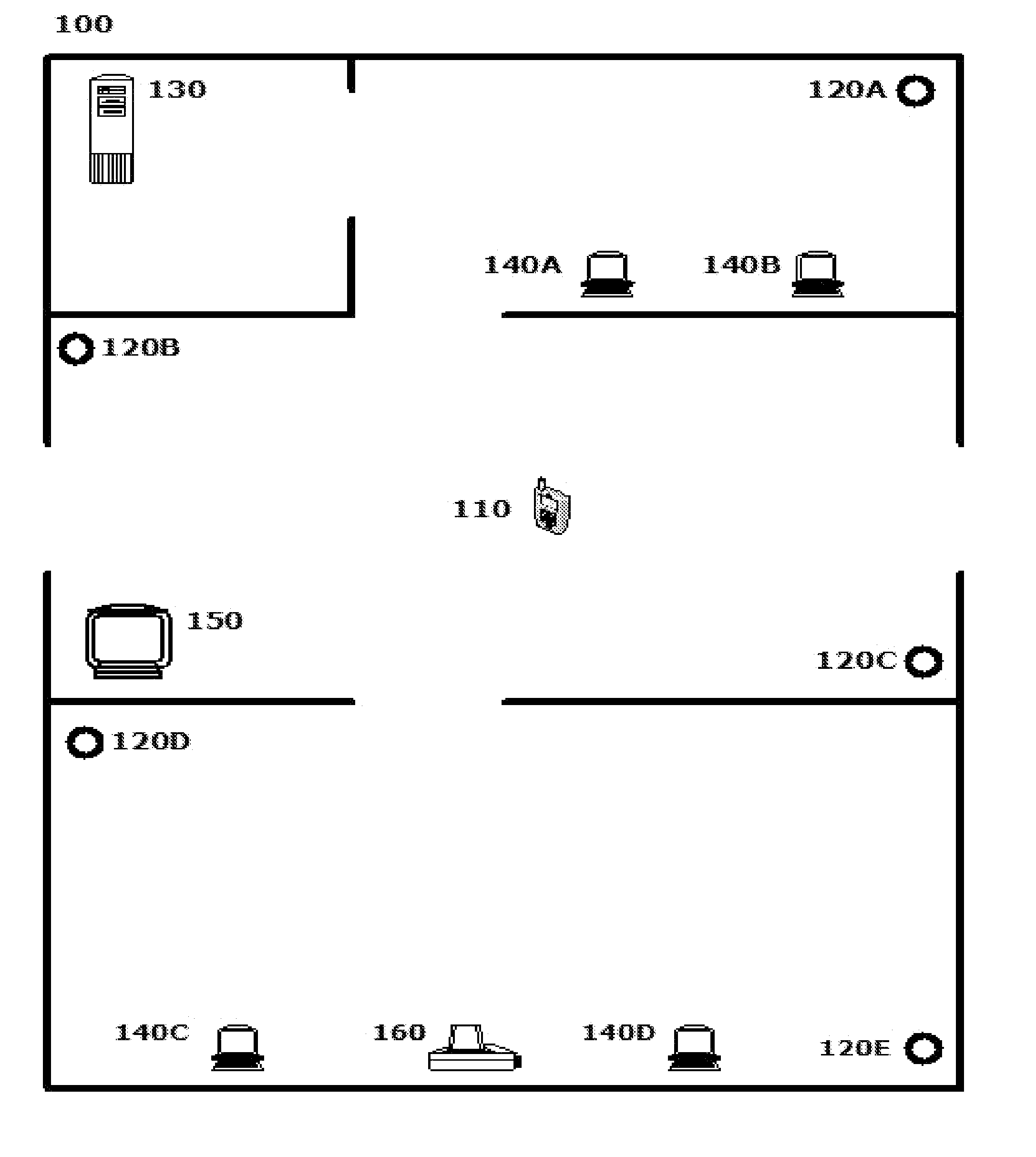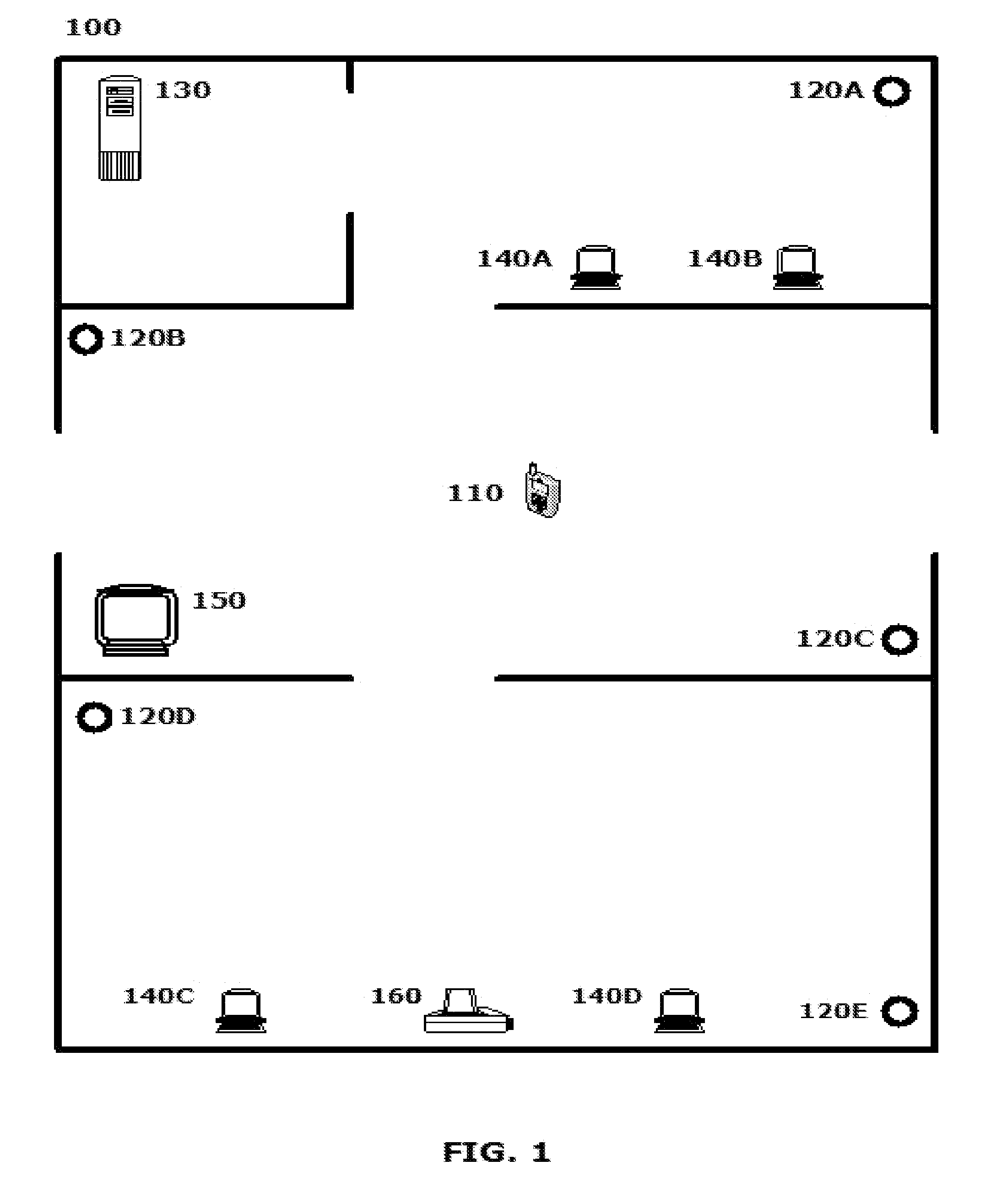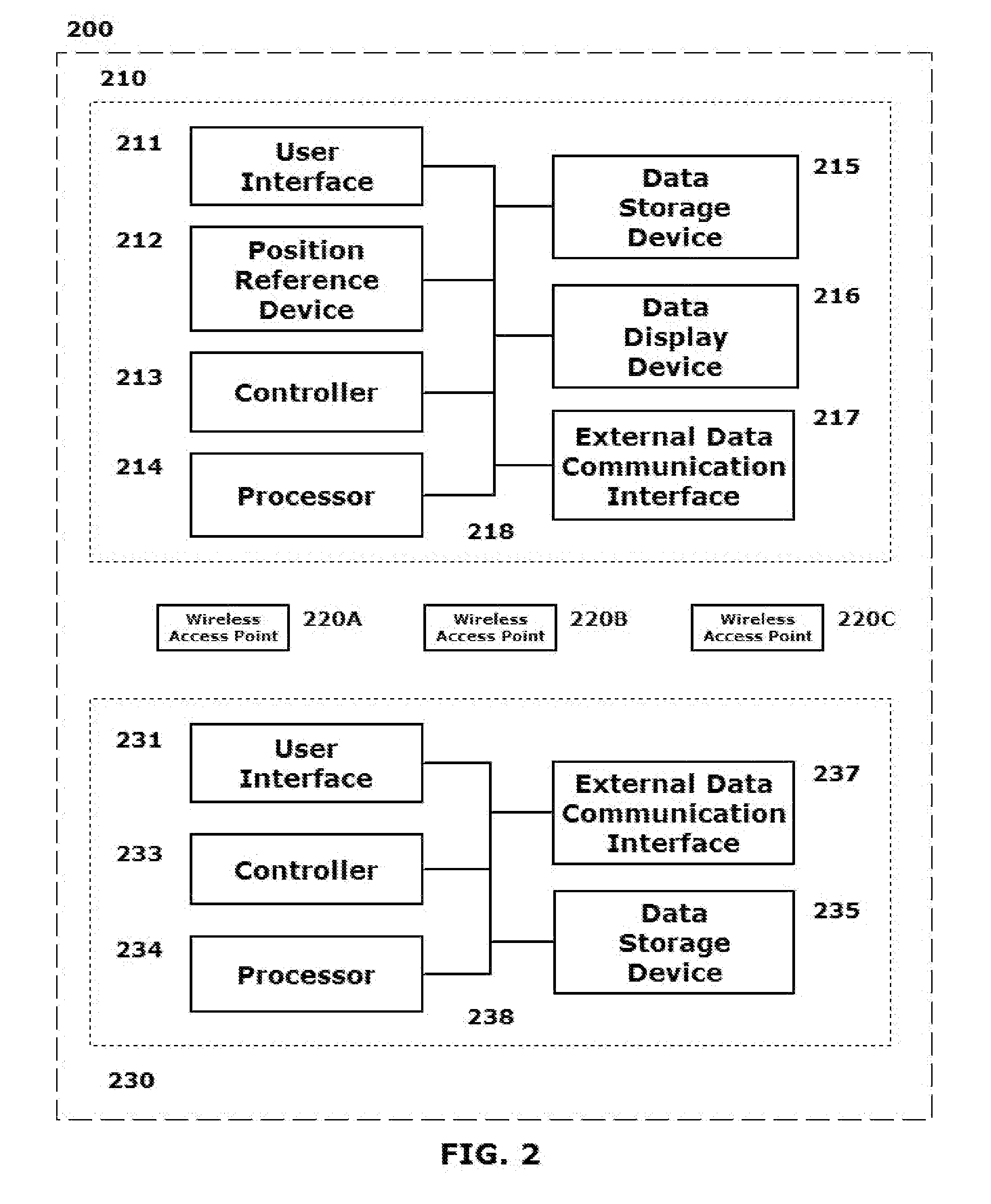Location sensing using channel fading fingerprinting
a fingerprinting and location technology, applied in the field of location sensing using channel fading fingerprinting, can solve the problems of gps performance, generic 50 foot precision of locating wireless devices with an available gps signal, and inability to work in the indoor environment, so as to improve the accuracy to the sub-meter level
- Summary
- Abstract
- Description
- Claims
- Application Information
AI Technical Summary
Benefits of technology
Problems solved by technology
Method used
Image
Examples
Embodiment Construction
[0002]This disclosure relates to systems and methods for providing precise location sensing for wireless devices in an indoor environment using channel fading fingerprinting.
[0003]2. Related Art
[0004]In recent years, there has been an unprecedented increase in the numbers and types of wireless devices accessing all manner of wireless networks. These wireless devices are being loaded with increasingly capable libraries of applications that provide the wireless devices with the capacity to undertake all manner of tasks that far exceed simple communication between wireless devices via, for example, a wireless network to which the wireless devices have gained access.
[0005]Many of the applications that are being developed and implemented in wireless devices, and the wireless networks to which they are connected, benefit from an ability to identify a specific geographic location for a particular wireless device. These so called “location-based services” are provided in the wireless device...
PUM
 Login to View More
Login to View More Abstract
Description
Claims
Application Information
 Login to View More
Login to View More - R&D
- Intellectual Property
- Life Sciences
- Materials
- Tech Scout
- Unparalleled Data Quality
- Higher Quality Content
- 60% Fewer Hallucinations
Browse by: Latest US Patents, China's latest patents, Technical Efficacy Thesaurus, Application Domain, Technology Topic, Popular Technical Reports.
© 2025 PatSnap. All rights reserved.Legal|Privacy policy|Modern Slavery Act Transparency Statement|Sitemap|About US| Contact US: help@patsnap.com



